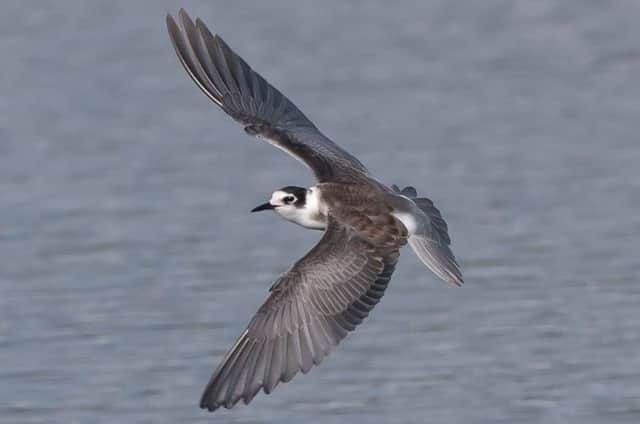Birdwatch: Delightful swooping terns offer displays en route to Africa


Delightful birds to watch, they swoop on silvery-grey wings to snatch insects from the water’s surface and, unlike other terns, seldom dive in.
They belong to a group called marsh terns and breed on wetlands across Europe, nesting on platforms of floating vegetation.
Advertisement
Hide AdAdvertisement
Hide AdAfter breeding is finished, almost the entire European population of between 150,000-200,000 individuals gathers for two to three weeks in July and August on the vast Ljsselmeer lake in the Netherlands before continuing their journey down the European coast.
Small numbers, a mix of adults and juveniles, pass through Britain. In spring, adults in full breeding plumage are seen on their way north.
Black terns were not always just passage migrants. Until the early 19th century they bred in large numbers here before the drainage of fenland destroyed their breeding sites.
In an account of a visit to Lincolnshire in 1769, naturalist Thomas Pennant referred to “vast flocks” of black terns “whose calls are almost deafening”. But the last pair bred in Norfolk in 1858 and there have only been isolated breeding attempts since then.
Advertisement
Hide AdAdvertisement
Hide AdNortherly winds this week brought more seabirds along the Yorkshire coast with sooty shearwaters seen off many watchpoints as they reach the northern most edge of a migration that has brought them from the South Atlantic islands where they bred.
There were also Balearic shearwaters from the Mediterranean seen off Long Nab, Filey, Flamborough and Spurn. After breeding they migrate north into the Bay of Biscay and small numbers through the Channel and into the North Sea.
A juvenile roseate tern was also seen off Long Nab and pomarine and Arctic skuas were also reported. An Arctic skua was seen inland at Orgreave lagoons, South Yorkshire while a Sandwich tern was at Pugney’s Country Park, Wakefield.
On land a male subalpine warbler, possibly of the eastern form that ranges from north-east Italy to Turkey, was seen this week at Flamborough and there were more red-backed shrikes with a juvenile at Hornsea Mere and others at Kilnsea, Flamborough and Fraisthorpe. One or two wrynecks and Icterine warblers were also seen.
Advertisement
Hide AdAdvertisement
Hide AdMore short-eared owls were also arriving with one at Filey and others at Spurn and Sammy’s Point while a quail was calling in fields at Long Nab.
Ospreys were seen at Nosterfield Quarry, and Chapel Hill, North Yorkshire and Broomhead Moor, South Yorkshire.
A juvenile black stork was reported again, this time at Stone Creek on the Humber, adult night heron on the River Aire at Swillington Ings, Leeds and great white egret on the Old Moor reserve near Barnsley.
A juvenile black redstart has been seen on the dam wall at Green Withens reservoir near Halifax.